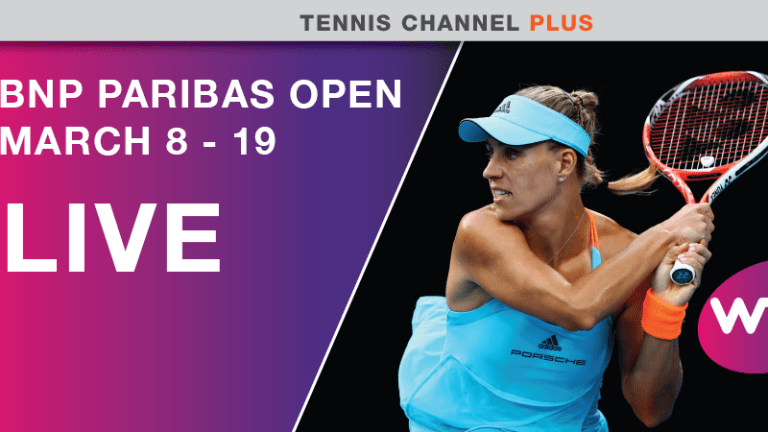Novak Djokovic isn’t known as a doubles player. At all. His career record in the four-man format is 43-58, and the highest he’s ever been ranked at it is No. 114. As comfortable as the 12-time Grand Slam champion looks patrolling the baseline during a singles match, that’s about as uncomfortable as he looks trying to patrol the net during a doubles match.
But there Djokovic was in Stadium 2 on Friday night in Indian Wells, clenching his fist, screaming self-encouragement, and slapping hands in celebration with his partner Viktor Troicki. The two Serbs were locked in a 10-point, match-deciding tiebreaker with Pablo Cuevas and Rohan Bopanna, in front of a packed house of 8,000. Djokovic looked like he wouldn’t have wanted to be anywhere else.
That wasn’t the case an hour or so earlier. The world No. 2 had been rusty and unsure of himself to start, but the rowdy evening crowd, with Indian Wells owner Larry Ellison front and center, helped him find his showman’s spirit. When music began to blare from the stadium on the other side of the grounds, the Djoker knew what he had to do: Turn his racquet around, put the handle up to his face, and pretend he was blowing out a saxophone solo. The clip of Nole the sax man took about 10 seconds to make the social-media rounds.
But that wasn’t the only way Djokovic went viral on Friday. At match point, he stretched for a wide serve and lasered a forehand return down the line. Half a second later, the ball was beelining past his lurching opponents and into the back wall for a winner. Again, Djokovic knew what he had to do: He sprinted across the baseline, leaped in the air, and collided chest-on with Troicki. The Southern California crowd ate it up.
